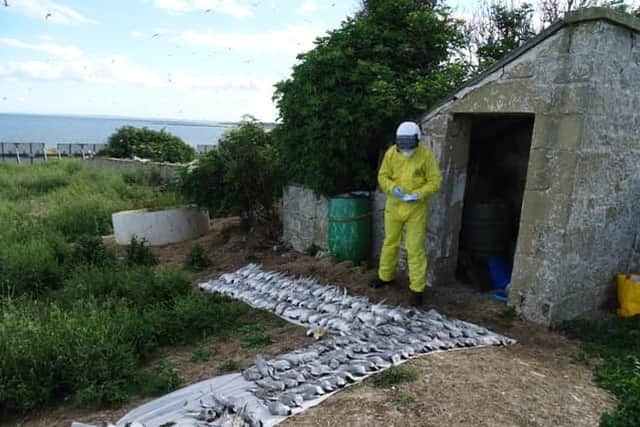'Little evidence' right now that mammals can infect one another with bird flu after Northern Irish foxes found with avian sickness
and live on Freeview channel 276
Meanwhile the government has continued to emphasise its warnings to dog-walkers to keep their pets on leads, well away from possibly-infected birds, and to avoid contact with feathers in the wild.
It comes after DAERA (the Department for Agriculture, the Environment and Rural Affairs) said last Friday that two fox cubs in the Portrush area had been found with bird flu – “the first time mammals have been confirmed as having influenza of an avian strain in Northern Ireland”.
Advertisement
Hide AdAdvertisement
Hide AdFollowing this news, the News Letter this week asked DAERA why avian flu appears to now be a year-round threat, as opposed to being overwhelmingly concentrated in wintertime.


“Like other flu viruses, by its nature, the avian influenza virus continually changes; it reassorts with other flu viruses and mutates,” said DAERA in response.
It went on to say: “Highly Pathogenic Avian Influenza (HPAI) has recently been detected in fox cubs in the Portrush area of Northern Ireland. While this is the first time mammals have been confirmed as having the virus in NI, it is not unexpected.
"There have been findings in mammals over recent months across Europe, Great Britain and the Republic of Ireland following reports of mammal deaths associated with wild bird die-offs.”
Advertisement
Hide AdAdvertisement
Hide AdHowever, the department also added: “While further research is ongoing, although there is evidence of wild bird-to-mammal infection, there is little evidence of mammal-to-mammal infection."
The H5N1 strain currently circulating was known to have the potential to affect mammals, including humans, following “prolonged close contact”, although the risk to people is considered “very low”, DAERA said.
In terms of what the public can do about it, DAERA said it wants people “to keep their dogs on leads and keep pets away from carcasses, particularly in coastal areas”.
In addition, people are advised not to “pick up or touch sick, dying or dead poultry, wild birds or wild animals and keep pets away from them”, to avoid contact with bird droppings, untreated bird feathers found in the general environment, and to “maintain good personal hygiene with regular hand washing with soap and use of alcohol-based hand rubs”.
Avian influenza is a notifiable disease.
Advertisement
Hide AdAdvertisement
Hide AdThat means anyone who suspects an animal may be affected must, by law, report it to their local DAERA Direct Office.
You can find details of how to do that by typing this link into your browser:
Meanwhile, members of the public can report dead or dying birds by visiting this link:
This is a new reporting tool that allows people to say exactly where and when they have seen a suspected case, and what it looked like.
It had been running for a fortnight as of last Friday, and in that time some 150 or so people had used it to file just such a report.